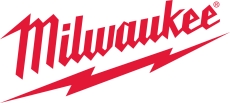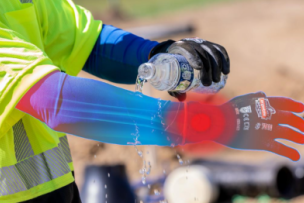Meanwhile, 64% of contractors say worker health and safety remains a top concern for their business.5
According to the National Occupational Research Agenda (NORA) for Musculoskeletal Health, in 2018 the median days away from work for all lost-time injuries was 8 days. The median days away from work for MSDs was 12 days, but higher for some occupations. For instance, for plumbers, pipefitters, and steamfitters, the median days away from work for MSDs was 80.6
Hiring more new workers, especially those new to the skilled trades, in this labor market means that employers and crews will need every resource available to support their safety.
Back injuries lead MSDs and costs
Injuries including sprains or strains, tendonitis and bruising can show up in varied ways, including weakness, pain, stiffness, joint noises like creaks and clicks, loss of movement, and days away from work. Of all incidents of MSDs in construction, backs are by far the most common body part injured.7
The cost of medical care rises each year and, in the U.S., back injuries lead health spending, according to a 20-year study by the Institute for Health Metrics and Evaluation. In 2020, the institute said among 154 conditions, low back and neck pain generated the highest health care expenditures at $ 134.5 billion. The second highest category in the 2016 data was all other musculoskeletal disorders, such as joint and limb pain, osteoarthritis, and rheumatoid arthritis, estimated at $ 129.8 billion.8 Specific to jobsites in 2017-2018, the average workers’ compensation costs were between $ 33,154 and $ 61,510 for some common injuries.
Other MSD data shows:
Frequency: In 2016, MSDs of all types comprised about 40% of all lost-time workplace injuries (356,910 of 902,200).9 The numbers are likely low, as several studies have found that both workers and employers may under-report MSDs, according to the NORA for Musculoskeletal Health. In one study, the estimated undercount of MSDs ranged from 20% to 70%.10
Most common types: For workers, injuries including sprains, strains, and tears are the most frequent. About 65% of MSDs in construction resulting in days away from work were related to sprains, strains, and tears.11 The injuries may develop into chronic conditions and permanent disabilities.
For employers, along with the stress of a human injury and cost of medical care, each incident means a productivity drop with days lost to injuries. Staff needs time to investigate an incident. Also, workers’ compensation insurance rates may increase from recordable incidents. While there is no federal ergonomics standard, if an employer is in violation of obvious ergonomics principles, the Occupational Safety and Health Administration (OSHA) enforces the General Duty Clause that requires employers to provide a safe working environment.12
A new way of working
What can bring sustained safety improvements to protect both workers’ bodies and business continuity? Answer: A new way of working on jobsites.
Today, crews have a new mindset and expectations. They realize many traditional risks of yesteryear, including wrenched backs and strained leg muscles, can be addressed on a jobsite. They don’t want to endure related health issues later in life, so look for the right equipment for the right job, to stay safer and more productive.
It’s time to work in new ways. Battery-operated light equipment offers user-driven solutions that enhance productivity and add safety and ease of use that translates into fewer MSDs.
Reduce MSD risk in sewer cleaning
Many common tasks can cause MSDs, but one of the greatest strains on a body is hauling a 200-pound sewer machine up an entire flight of basement stairs or pulling it up into a service van. This type of repetitive strain can have a major impact on the upper body including spine, lower body, forearms, and biceps.
Overexertion (lifting-lowering) is the greatest risk factor for MSDs.13 Yet, unfortunately, this is a daily situation for many professionals on sewer calls – and in order to avoid becoming an injury statistic, they often bring an extra person to help with transportation of the machine. That second person could have been sent out on another call, bringing the business added revenue.
Download a PDF to continue reading this whitepaper in its entirety.
References:
1PainScience.com How Many Muscles in the Human Body? https://www.painscience.com/articles/how-manymuscles.php
2National Institute of Occupational Safety and Health: Start Caring about WMSDs. https://www.cdc.gov/niosh/ topics/ergonomics/ergoprimer/default.html
3Ibid.
4The Construction Chart Book: The U.S. Construction Industry and Its Workers, Sixth Edition. The Center for Construction Research and Training, CPWR. February 2018. Page xvii.
5U.S. Chamber of Commerce Commercial Construction Index, December 10, 2020. https://www.uschamber. com/report/us-chamber-of-commerce-commercial-construction-index-2020-q4-0
6National Occupational Research Agenda (NORA) for Musculoskeletal Health. October 2018. Developed by the NORA Musculoskeletal Health Cross-Sector Council. Page 4. https://www.cdc.gov/nora/councils/mus/ pdfs/National-Occupational-Research-Agenda-for-Musculoskeletal-Health-October-2018.pdf
7The Construction Chart Book: The U.S. Construction Industry and Its Workers, Sixth Edition. The Center for Construction Research and Training, CPWR. February 2018. Page 48.
8Dieleman JL, Cao J, Chapin A, Chen C, Li Z, Liu A, Horst C, Kaldjian A, Matyasz T, Scott KW, Bui AL, Campbell M, Duber HC, Dunn AC, Flaxman AD, Fitzmaurice C, Naghavi M, Sadat N, Shieh P, Squires E, Yeung K, Murray CJL. US Health Care Spending by Payer and Health Condition, 1996-2016. JAMA. 3 March 2020. doi:10.1001/jama.2020.0734. http://www.healthdata.org/research-article/us-health-care-spendingpayer-...
9BLS (Bureau of Labor Statistics) [2016]. Cited in National Occupational Research Agenda (NORA) for Musculoskeletal Health. October 2018. Developed by the NORA Musculoskeletal Health Cross-Sector Council. Page 4. https://www.cdc.gov/nora/councils/mus/pdfs/National-Occupational-Researc...
10National Occupational Research Agenda (NORA) for Musculoskeletal Health. October 2018. Developed by the NORA Musculoskeletal Health Cross-Sector Council. Page 5. https://www.cdc.gov/nora/councils/mus/ pdfs/National-Occupational-Research-Agenda-for-Musculoskeletal-Health-October-2018.pdf
11The Construction Chart Book: The U.S. Construction Industry and Its Workers, Sixth Edition. The Center for Construction Research and Training, CPWR. February 2018. Page 48.
12Occupational Health and Safety Administration. https://www.osha.gov/laws-regs/oshact/section5-duties
13The Construction Chart Book: The U.S. Construction Industry and Its Workers, Sixth Edition. The Center for Construction Research and Training, CPWR. February 2018. Page 48.




max_efficiency_thumb.png?itok=_OhRZeS3)




Talk to Us!
Leave a reply
Your email address will not be published. Required fields are marked *